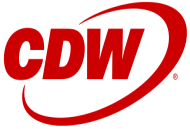Despite these benefits, many government agencies have experienced cloud sticker shock, finding that anticipated cost savings can be elusive due to expenses and management complexities.
The promise of reduced capital expenditures and the ability to convert fixed costs into variable ones make cloud solutions appealing. However, transitioning to the cloud can sometimes result in higher-than-expected expenses due to a lack of visibility and control over resources, inefficient use of services, and unforeseen pricing intricacies. According to one survey, 66% of business executives reported that their organizations’ cloud initiatives have not lowered the total cost of ownership of IT systems.
This highlights a key challenge: Achieving effective cloud cost management requires more than migration. It demands a strategic approach to understanding and controlling expenditures. A separate report shows the current cost challenges associated with the cloud: More than one-third of organizations cited the unpredictability of costs as a key impediment to cost control, and 31% cited the complexity of pricing models.
How to Get Cloud Cost Visibility
Clearly, a critical factor in managing cloud costs is gaining better visibility into resource use and expenses. Government IT admins need to understand precisely how much cloud capacity they consume, identify optimization areas and adjust usage accordingly. Some cloud providers offer this as part of their service, but their insight may be limited to their specific platforms instead of looking at the cloud more holistically.
This ability to assess and manage cloud resources is essential for preventing wasteful spending and ensuring that the cloud delivers its promised economic benefits. In response to this need, an emerging practice known as cloud financial management, or cloud FinOps, has gained traction as a solution for optimizing cloud expenditures.
By adopting cloud FinOps, government agencies can gain the control and insight to manage their cloud expenditures strategically.”
Cloud FinOps is an operational framework that strives to bring financial accountability to cloud computing’s dynamic and scalable nature. Essentially, it seeks to align cloud operations with business and financial goals through an integrated approach to resource management. It encourages collaboration among technology, finance and business teams to effectively manage and optimize the costs associated with cloud services.
The FinOps framework is built on three key pillars:
- Inform. This involves creating visibility into cloud spending by leveraging tools and dashboards that track and report on usage and costs. This transparency allows organizations to understand cloud consumption patterns and identify cost-savings opportunities.
- Optimize. Here, organizations focus on implementing strategies to maximize the value of cloud investments. This includes rightsizing resources, taking advantage of pricing models such as reserved instances or spot instances, and eliminating unused or underused services.
- Operate. Finally, this pillar emphasizes the need for continuous monitoring and governance to ensure that cost optimization is an ongoing process rather than a one-time effort.
Third Parties Offer Cloud FinOps Software and Services
In addition to internal efforts, agencies can benefit from expert guidance to navigate the complexities of cloud cost management. Many agencies engage with specialized consultants or service providers with extensive experience implementing cloud FinOps practices. These experts can offer valuable insights, tools and methodologies to help organizations optimize their cloud investments and achieve their business objectives.
Some providers offer management software that can integrate with any or all of the major cloud providers and provide cost and operational insights. For example, Inscape by CDW is a cloud management platform that helps government agencies get a broad view of their environments. CDW also combines its Inscape software with cloud management services and monitoring that many organizations find helpful.
Leveraging automation and intelligent tools can significantly enhance the efficiency and effectiveness of FinOps efforts. Advanced analytics and machine learning algorithms can analyze usage patterns and suggest optimizations, such as auto-scaling resources in response to demand or shifting workloads to regions with lower costs. Automated alerts and actions also can help prevent overspending by notifying stakeholders of unusual spending patterns or enforcing spending limits.
Despite the advantages of cloud FinOps, government agencies may encounter challenges when adopting the framework. These include overcoming organizational silos, managing the complexity of multicloud environments, and keeping pace with the rapidly evolving landscape of cloud technologies and pricing models. Addressing these challenges requires a commitment to continuous learning and adaptation and a strategic investment in developing the necessary skills and capabilities within the organization.
In conclusion, while cloud computing offers significant cost management and reduction potential, achieving these benefits requires more than just adopting cloud services. It involves implementing a disciplined approach to cost management through the cloud FinOps framework. By fostering collaboration, leveraging expertise and using advanced tools, state and local organizations can gain the visibility and control needed to manage cloud costs effectively and align them with their business goals. As the cloud landscape continues to evolve, embracing cloud FinOps will be crucial for agencies seeking to maximize the value of their cloud investments and achieve a sustainable competitive advantage.








